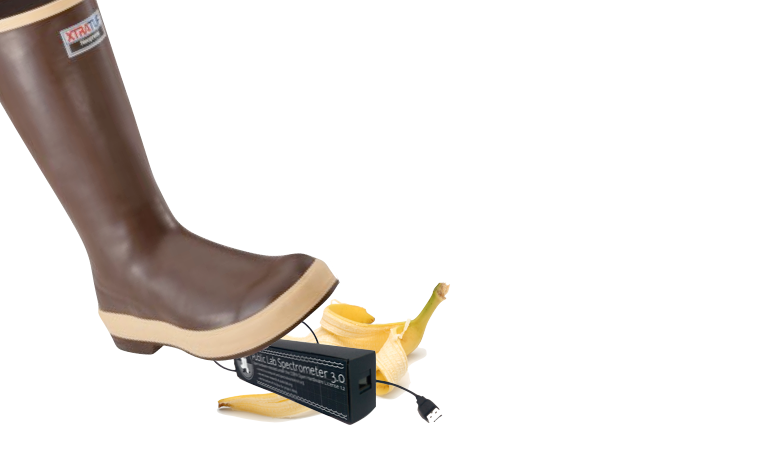What I want to do or know
What situations can I deploy the spectrometer in and how long can I use it under various conditions?
What should I expect when traveling with it? Suppose I put it in my bag in a cardboard box to protect it; should I place packing material around spec or will the box be enough?
Can I quickly move it from one place to another or does it require special handling even when I do nothing more than rearrange my setup on the table?
What happens to it if it gets wet? When (if) it dries will it retain it's former rigidity?
What if it gets accidentally crushed? Can I prop it back up again, or are the perfect 90 degree angles essential to its functioning?

Hello bsugar,
The DSK 3.0 is made of paper. The paper is, without getting technical, slightly more rigid and slightly thicker than a greeting card. But, that said, it is still paper. If it gets wet it will have ruined the electronic webcam inside. If it gets crushed, the same thing is likely to have happened.
For safe long distance transport, it would be best to disasseble the housing and reconstruct it once you arrive at your destination. The housing is only folded, so it can be disassembled and reassembled a few times. You could keep the bench, which is rigid, and holds a wood block with webcam and cable velcro-ed to a wooden platform, in a plastic bag inside of a box to keep it safe (box) and waterproof (bag).
Moving it across the desk is fine.
We would love to see builds that use rigid containment, and if a build using rigid containment gets developed at a reasonable price point and to a mature enough level to warrant testing I would be happy (as the Public Lab Kits Dept Coordinator) to do what I can to facilitate a beta test of it.
There are now some upgrade proposals for more rigid internals: https://publiclab.org/notes/stoft/09-16-2016/stability-upgrade-mockup-for-plab-spectrometer-3-0 and a more rigid enclosure: https://publiclab.org/notes/warren/04-21-2016/prototype-of-easy-to-build-rigid-spectrometer-housing
Reply to this comment...
Log in to comment
@stoft has proposed a set of tests and thresholds for different rigidity"standards" of sorts, here: https://publiclab.org/notes/stoft/09-15-2016/what-mechanical-specs-can-and-should-plab-spectrometers-meet
They include things like types "3" stresses and a "drop test" from different heights.
I also think we might differentiate between desired rigidity when transported in its box (packaging) vs during use.
Update: we tried out this set of tests! Read more here: https://publiclab.org/notes/warren/10-17-2016/stress-testing-the-desktop-spectrometry-starter-kit
I also wanted to link back to this idea of monitoring the green peaks over a period of time:
Updated my answer: yes!
Reply to this comment...
Log in to comment